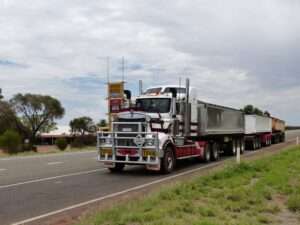Trucking Regulations and Compliance: A Comprehensive Guide to Industry Standards in the United States
The trucking industry serves as the lifeblood of the United States’ transportation network. It is responsible for moving goods and materials across vast distances. To ensure the safety of drivers, passengers, and other road users, the trucking industry is subject to a multitude of regulations and compliance standards. In this article, we will delve into the various aspects of trucking regulations and compliance that govern the industry, with a focus on hours of service rules, weight restrictions, and safety requirements. Understanding these crucial guidelines is paramount for trucking companies, drivers, and stakeholders to maintain a safe and efficient transportation system.

Overview of Hours of Service Regulations
Hours of Service (HOS) rules are designed to prevent driver fatigue and promote road safety. The Federal Motor Carrier Safety Administration (FMCSA) enforces these regulations, outlining the maximum number of hours a driver can work within specific timeframes. The HOS rules aim to ensure that drivers have sufficient rest periods to prevent fatigue-related accidents on the road. By limiting the number of hours a driver can operate a commercial vehicle, these rules reduce the risk of drowsiness and maintain the alertness and focus necessary for safe driving.
HOS Rules for Property-Carrying Drivers
11-Hour Driving Limit
Property-carrying drivers are permitted to drive a maximum of 11 hours after 10 consecutive hours off duty. This rule ensures that drivers have an adequate amount of rest time between shifts, reducing the likelihood of fatigue-related incidents.
14-Hour Limit
Within the 14-hour window, drivers are prohibited from driving beyond the 14th consecutive hour after coming on duty, following 10 consecutive hours off duty. This provision aims to prevent drivers from working excessively long shifts, which can compromise their alertness and decision-making abilities.
Rest Breaks and Sleeper Berth Provision
To further combat driver fatigue, drivers must take a 30-minute break if more than 8 hours have passed since their last off-duty or sleeper-berth period of at least 30 minutes. This break requirement ensures that drivers have regular intervals of rest during their working hours.
HOS Rules for Passenger-Carrying Drivers
For drivers transporting passengers, the HOS rules differ slightly:
10-Hour Driving Limit
Passenger-carrying drivers are permitted to drive a maximum of 10 hours after 8 consecutive hours off duty. This rule recognizes that operating vehicles carrying passengers requires additional focus and attention, necessitating slightly shorter driving periods to maintain alertness.
15-Hour Limit
Within the 15-hour window, drivers are prohibited from driving beyond the 15th consecutive hour after coming on duty, following 8 consecutive hours off duty. This provision aims to ensure that passenger-carrying drivers have sufficient rest periods to prevent fatigue-related incidents.

Weight Restrictions
Weight restrictions in the trucking industry are crucial for preserving the integrity of roads, bridges, and other infrastructure. These limits help prevent excessive wear and tear on transportation networks and ensure the safety of all road users.
The Federal Bridge Formula is a formula that calculates the maximum allowable weight on a bridge based on the spacing between axles and the total weight of the vehicle. By adhering to this formula, trucking companies and drivers can avoid damaging bridges and roads. The Federal Bridge Formula takes into account axle spacing to distribute the weight of the truck evenly, minimizing the stress on the infrastructure. This formula helps prevent overweight trucks from causing structural damage to bridges and ensures the safety and longevity of these vital transportation links. In addition to federal weight restrictions, individual states may impose their own weight limits on certain roads and bridges. It is essential for trucking companies to be aware of and comply with these state-specific regulations to avoid penalties and maintain safety standards.
State-specific weight limits may vary based on factors such as the type of road, bridge conditions, and local regulations. Trucking companies must stay updated on these limits and ensure that their vehicles comply with the weight restrictions in each state they operate.
Safety Requirements
Vehicle Maintenance and Inspections
The trucking industry is subject to rigorous safety requirements to ensure that vehicles are properly maintained and inspected. Regular inspections and maintenance help identify and address potential issues that could compromise the safety of the driver and other road users. Vehicle maintenance and inspections are essential to ensure that trucks are in proper working condition, minimizing the risk of mechanical failures on the road. Trucking companies must adhere to maintenance schedules, conduct routine inspections, and promptly address any identified issues to prevent accidents and maintain road safety.
Driver Qualifications and Training
To enhance safety on the roads, the trucking industry places significant emphasis on driver qualifications and training. Drivers must meet certain criteria, such as possessing a valid commercial driver’s license (CDL) and undergoing specialized training programs to ensure they have the necessary skills and knowledge to operate a commercial vehicle safely. Driver qualifications and training programs focus on teaching drivers the best practices for safe driving, handling various road conditions, and responding to potential hazards. These requirements help ensure that drivers are well-prepared and capable of operating commercial vehicles in a manner that prioritizes safety.
Hazardous Materials (Hazmat) Compliance
Transporting hazardous materials presents additional risks and requires strict adherence to safety protocols. The Department of Transportation (DOT) establishes regulations governing the handling, packaging, and transportation of hazardous materials to safeguard against accidents and potential harm to people and the environment. Hazardous materials regulations encompass various aspects, including proper labeling, packaging, placarding, and specialized handling procedures. Trucking companies involved in transporting hazardous materials must comply with these regulations to mitigate the risks associated with these substances and protect public safety.
Conclusion:
The trucking industry in the United States operates within a complex regulatory framework. Hours of service rules, weight restrictions, and safety requirements play a vital role in governing this dynamic industry. Adhering to these regulations and compliance standards is not only necessary for legal compliance but also crucial for maintaining a safe and reliable transportation system. By understanding and implementing these guidelines, trucking companies and drivers contribute to the overall well-being of the industry, protect road users, and promote the smooth flow of goods and materials throughout the nation.

FAQs:
Q1: What are the consequences of non-compliance with trucking regulations?
Non-compliance with trucking regulations can result in severe consequences, including fines, penalties, and even the suspension or revocation of operating licenses. Additionally, non-compliance can lead to accidents, injuries, and loss of life, which can have far-reaching legal and financial implications for trucking companies.
Q2: Are there any exemptions to hours of service rules?
Yes, there are certain exemptions to hours of service rules. For example, drivers operating within a 150-air-mile radius of their work reporting location may be exempt from keeping a record of duty status. Similarly, drivers who operate under the short-haul exemption and return to their work reporting location within a specified time frame may have relaxed hours of service requirements.
Q3: How are weight limits enforced?
Weight limits are enforced through weigh stations, portable scales, and roadside inspections. Trucking enforcement officers have the authority to check a truck’s weight and issue citations or penalties for violations. In some cases, trucks may be required to undergo offloading to comply with weight restrictions.

